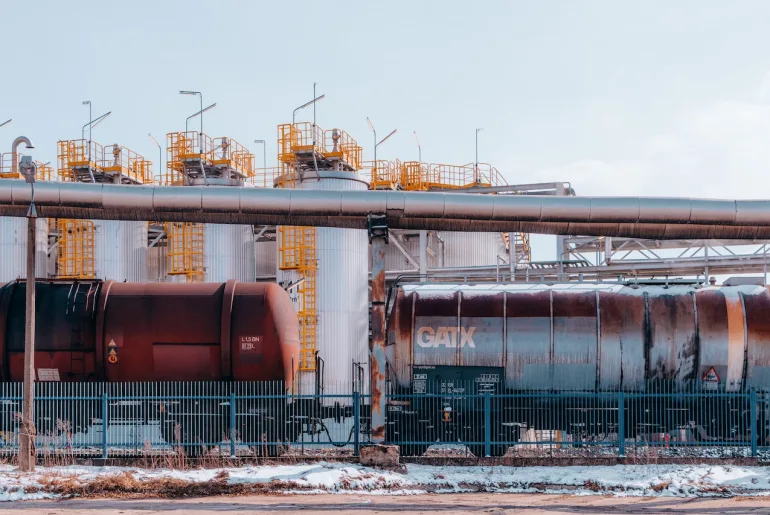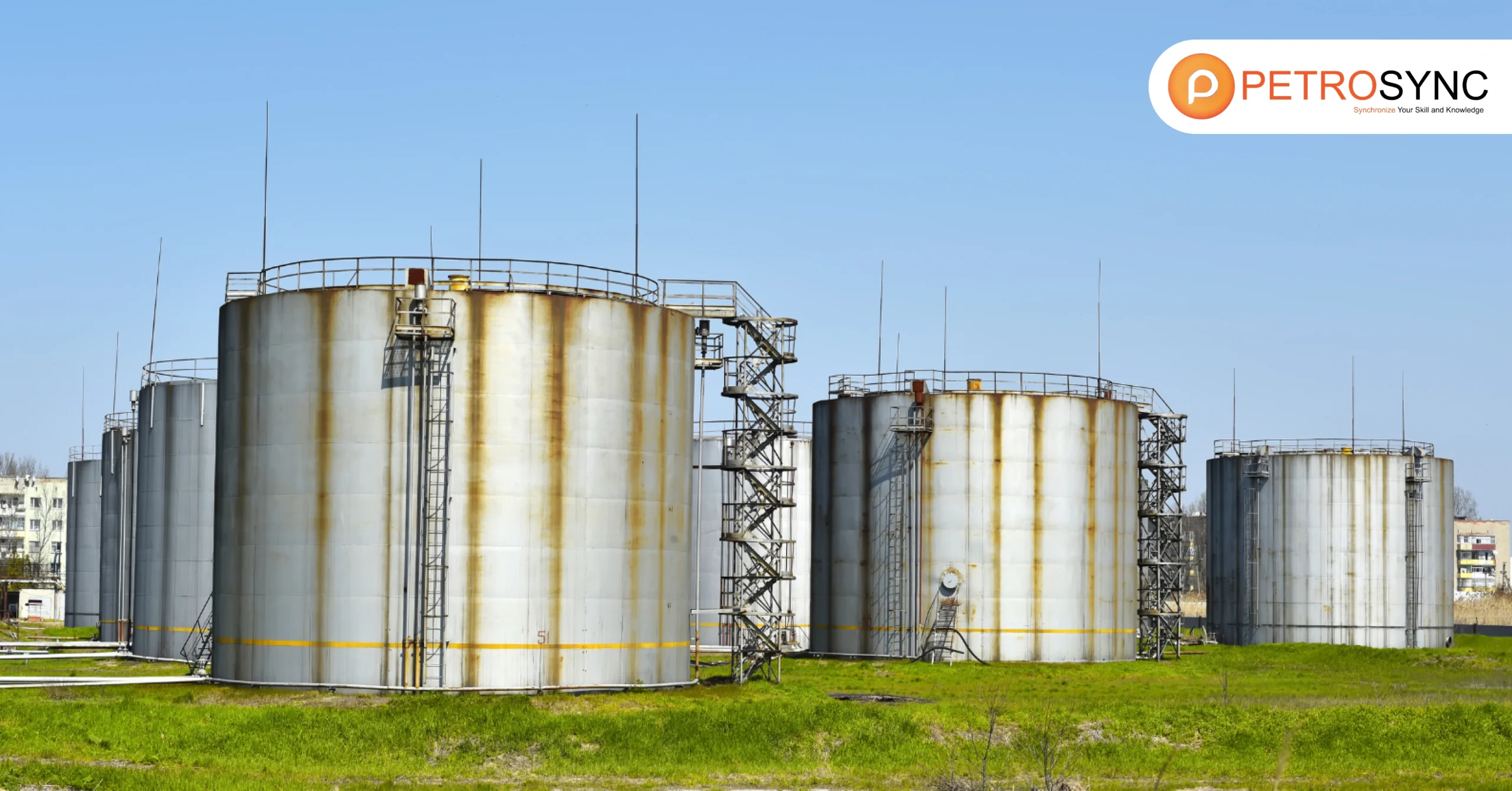In the oil and gas industry, Risk-Based Inspection (RBI) is a valuable approach for proactive maintenance and risk mitigation. This article explores the fundamentals of RBI, including its fundamentals, objectives, key elements, and procedures. Whether you are new to the concept or seeking to deepen your understanding, this guide provides a comprehensive overview of how RBI improves operational performance and safeguards assets.
What Is Risk-Based Inspection?
Risk-Based Inspection (RBI) is a strategic maintenance approach employed to assess equipment like pressure vessels, quick opening closure (QOC) doors, heat exchangers, and piping in industrial facilities. It is a methodical process that focuses on optimizing inspection plans and decision-making.
Further, RBI involves creating an inspection plan that takes into account the likelihood of failure and its potential consequences. It encompasses a thorough risk analysis, which includes evaluating the probability of failure caused by flaws, damage, deterioration, or degradation, along with assessing the impacts resulting from such failures.
By analyzing the likelihood of failures and their potential consequences, RBI helps companies figure out where to focus their inspection efforts as it prioritizes inspections where they matter most.
By concentrating on components or areas with a higher risk of failure or severe consequences, companies can effectively protect their assets and prevent incidents or breakdowns. This methodical approach not only keeps equipment in good shape but also saves time and money by reducing downtime and improving overall efficiency.
The RBI process involves a few key steps, like risk assessment, data collection, analysis, and decision-making. It’s a collaborative effort involving inspectors, engineers, and risk analysts who gather information and evaluate it carefully.
The end result is a well-thought-out inspection plan that determines when and how inspections should be conducted based on the identified risks.
What Is The Objective of Risk-Based Inspection?
The primary goal of RBI is to manage risks by determining inspection methods, coverage, and frequency. It focuses on the benefits of inspecting specific areas in the process plant. The objectives of RBI are as follows:
1. Enhance Risk Management Outcomes
RBI enhances risk management outcomes by prioritizing inspections based on risk levels, enabling targeted allocation of resources, and proactively addressing high-risk areas to mitigate potential failures and incidents.
2. Implement A Comprehensive, Interconnected Approach to Risk Management
RBI implements a comprehensive, interconnected risk management approach by integrating various factors such as equipment condition, operating conditions, historical data, and consequences of failure. This facilitates informed decision-making and effective risk mitigation strategies.
3. Execute Necessary Inspections to Safeguard Asset Integrity, Enhance Reliability, and Maximize Availability
RBI executes essential inspections by identifying critical areas, prioritizing inspection efforts, and implementing proactive maintenance strategies. This ensures timely inspections and maintenance activities, reducing the risk of failures and optimizing asset performance.
4. Mitigate The Risk of Failures
Risk-based inspection (RBI) identifies high-risk areas, prioritizes inspections, and optimizes resource allocation, reducing failure risks efficiently.
5. Improve Plant Availability and Reduce Unplanned Outages
The RBI can enhance plant availability and minimize unplanned outages by enforcing strict maintenance standards, promoting regular equipment inspections, implementing proactive maintenance strategies, and encouraging the adoption of advanced monitoring technologies.
6. Utilize a Flexible Methodology That Adapts to Evolving Risks
The RBI utilizes a flexible methodology that adapts to evolving risks by regularly reviewing and updating its regulatory frameworks, risk management practices, and supervisory approaches. This allows the RBI to stay responsive to emerging risks and challenges within the financial system, ensuring effective risk mitigation measures are in place.
7. Ensure Inspection Techniques and Methods Consider Potential Failure Modes
To ensure inspections consider potential failure modes, RBI uses risk-based methodologies. It prioritizes areas with higher risks, allocates inspection resources accordingly, and provides guidance to financial institutions for comprehensive risk management.
What Are The Key Elements of RBI?
A typical implementation of Risk-Based Inspection (RBI) consists of the following components:
1. Data Collection
Gathering relevant information including design, construction, process, and operating data, as well as inspection and maintenance history. Reviewing damage mechanisms to identify their rates, locations, and associated failure modes.
2. Risk Assessment
Assessing the consequences of failure (CoF) by estimating the impacts on safety, health, environment, and economics. Evaluating the probability of failure (PoF) based on damage mechanisms, inspection program effectiveness, and other factors.
3. Risk Ranking
Calculating risk for each consequence, conducting sensitivity analysis to validate risks, and presenting and communicating the risks. Establishing acceptable risk levels and identifying risks that require mitigation.
4. Inspection Planning
Developing an inspection plan that addresses risk drivers, specifying inspection methods, extent, and intervals. Incorporating other risk mitigation activities and considering residual risk levels after plan execution.
5. Mitigation
Implementing risk-based inspection plans, establishing Integrity Operating Windows (IOWs), performing equipment replacement, repair, modification, redesign, rerating, process modifications, and other relevant actions.
6. Reassessment
Updating risk assessments and inspection plans based on inspection and mitigation results.
Regardless of whether qualitative, semi-quantitative, or quantitative RBI is employed, the Risk-Based Inspection methodology has demonstrated its value in the petrochemical industry and other sectors where Asset Performance Management is crucial.
How Do You Implement an RBI Program?
Implementing an RBI (Risk-Based Inspection) program involves following a set of general steps to ensure its successful implementation. These steps serve as a guide to effectively establish an RBI program within an organization.
1. Define Objectives and Scope
Clearly outline the intended goals and boundaries of the RBI program, specifying what it aims to achieve and the areas it will cover.
2. Identify Assets and Failure Modes
Identify the critical assets within the system that require attention and determine the potential ways in which they can fail or be vulnerable.
3. Assess Risks and Establish Risk Criteria
Evaluate the likelihood and impact of the identified failure modes. Set specific risk criteria and thresholds to determine the level of risk that is acceptable or requires action.
4. Develop Inspection Plans and Strategies
Devise a comprehensive plan for conducting inspections, considering factors such as asset criticality, risk levels, available resources, and regulatory requirements. Determine the frequency, methods, and scope of inspections.
5. Execute Inspections and Collect Data
Carry out inspections according to the developed plan. Collect relevant data, perform tests, and document observations, ensuring accurate and detailed information is gathered.
6. Analyze Data to Prioritize Risks
Analyze the collected data and observations to assess the severity and probability of failure modes. Prioritize risks based on their significance and potential impact on the system.
7. Take Corrective Actions Based on Findings
Based on the analysis of inspection data and prioritized risks, implement necessary corrective actions. This may involve maintenance, repairs, upgrades, or other risk mitigation measures.
8. Monitor and Review The Program Regularly
Continuously monitor the effectiveness of the RBI program, track performance indicators, and review its outcomes. Identify any shortcomings, evaluate the program’s success, and make necessary adjustments or improvements.
9. Continuously Improve and Update The RBI Program
Learn from the experience and incorporate feedback to enhance the RBI program over time. Stay updated with evolving risks, industry best practices, and regulatory changes, and adjust the program accordingly to ensure its effectiveness and relevance.
What Are The International Engineering Standards and Practices That Applies RBI Approach?
There are several international engineering standards and practices that apply to the Risk-Based Inspection (RBI) approach. Here are a few key ones:
API 570 Piping Inspection
API 570 is relevant to RBI as it provides specific guidelines for inspecting, repairing, and maintaining piping systems. These guidelines align with the principles of RBI, emphasizing risk assessment and prioritizing inspections based on risk levels.
API 570 complements RBI by offering industry-specific practices for ensuring the integrity and reliability of piping systems in overall RBI implementation. PetroSync offers API 570 training as a way to help you grasp the RBI implementation as part of the piping inspection strategy.
API 580 Risk-Based Inspection
API 580 is a comprehensive guideline by API for RBI in the petroleum and petrochemical industries. It covers risk assessment, inspection planning, decision-making, and other key aspects of RBI implementation. It helps organizations follow best practices and implement RBI effectively.
API 581 Risk-Based Inspection Technology
API 581 is a relevant standard for RBI as it specifically focuses on Based Resource Document. It provides quantitative methodologies, models, and tools for assessing risks, planning inspections, and making informed decisions.
PetroSync provides API 580 and API 581 training offering guidance and best practices for you to enhance risk assessment and inspection planning processes in various industries.
Credit header image: Pexels

SEO specialist by day, fact-checker by night. An avid reader and content writer dedicated to delivering accurate and engaging articles through research and credible sources.







